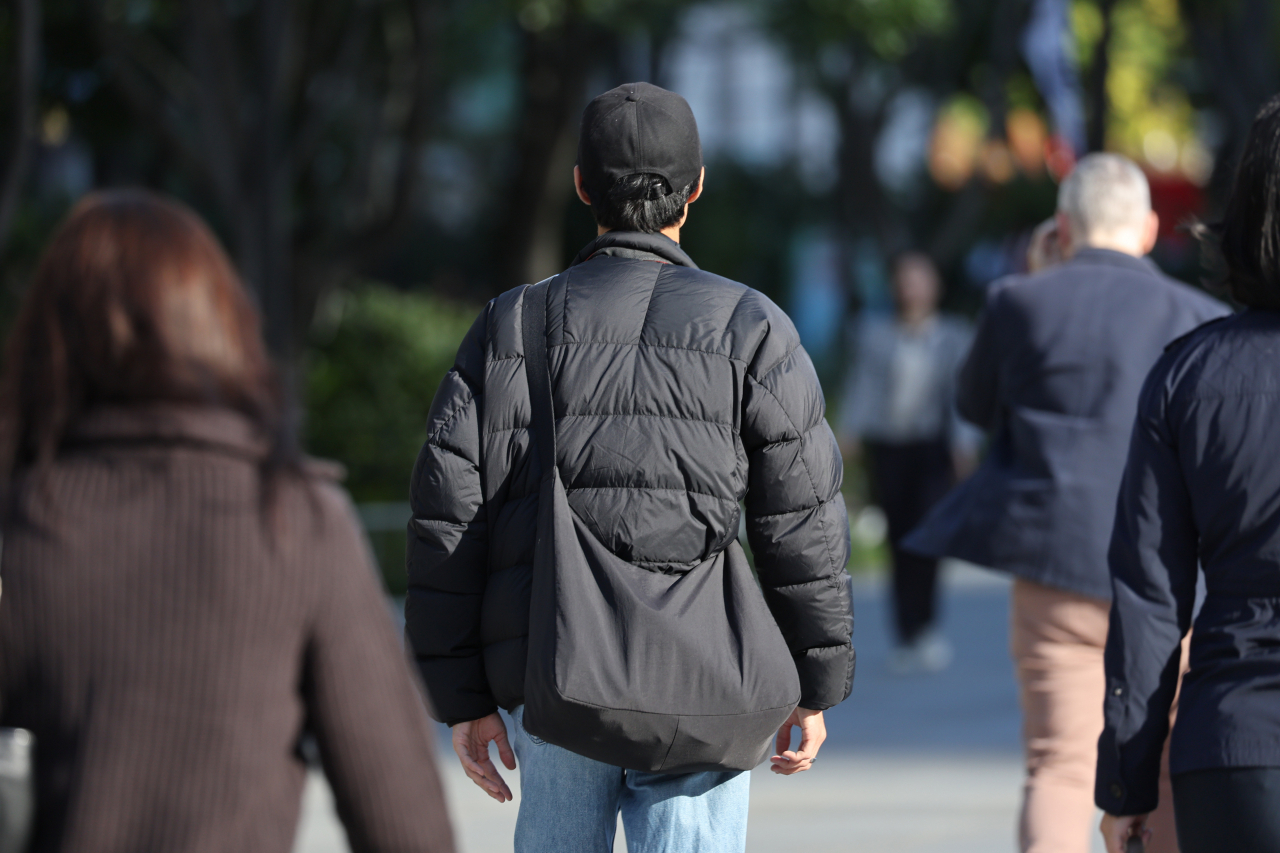 |
A pedestrian dressed in a padded jacket walk in Jongno-gu, central Seoul, as Seoul saw morning temperatures reach as low as 11.7 C as of 8 a.m., Wednesday. (Yonhap) |
Following nationwide rain Tuesday, South Korea experienced chilly fall weather Wednesday morning, as temperatures dipped by up to 10 degrees Celsius compared to the previous day accompanied by strong winds, said the Korea Meteorological Administration.
According to the KMA, the influx of cold air from the northwest and strong winds resulted in Wednesday morning lows 5 C to 10 C lower than the previous day in the central region, comprising the Greater Seoul area -- Seoul, Incheon and Gyeonggi Province -- Gangwon Province and the Chungcheong Provinces. Other regions experienced morning temperatures 2 C to 5 C lower than Tuesday.
As of 7 a.m., Seoraksan in Gangwon Province saw temperatures reach as low as 0.2 C, while cities such as Paju in Gyeonggi Province and Chungju in North Chungcheong Province saw morning temperatures of 6 C and 9.6 C, respectively. Seoul, on the other hand, saw temperatures reach 11.7 C as of 8 a.m. Wednesday morning.
The state weather agency added that Wednesday’s daytime temperatures would also be slightly cooler than previous years, with temperatures expected to range between 22 C to 25 C.
According to the KMA, temperatures cooler than average records are expected to continue until Thursday, with average morning lows and daytime temperatures expected to reach up to 12 C and 21 C nationwide, respectively.
While temperatures are expected to rise from Friday, average daytime temperatures will not exceed 25 C, according to the weather agency’s short-range weather forecast.
Besides low temperatures, the KMA predicted heavy rainfall concentrated in southern parts of Korea would begin early Thursday morning and expand to other parts of the country until Friday, as Typhoon Krathon's route shifted significantly to the west on Tuesday.
Though it is unlikely that Typhoon Krathon will directly hit the country, its clouds are expected to bring moisture from the south that will meet with the northeasterly air current, resulting in rainfall.
While the KMA currently expects up to 60 millimeters of rain in heavily hit regions in the south, the agency added that precipitation levels could increase if Typhoon Krathon moves northward faster than expected. Should the speed of the typhoon clouds reduce, there is also a chance for rain to continue until Oct. 8, depending on the amount of moisture brought into Korea by the typhoon.







